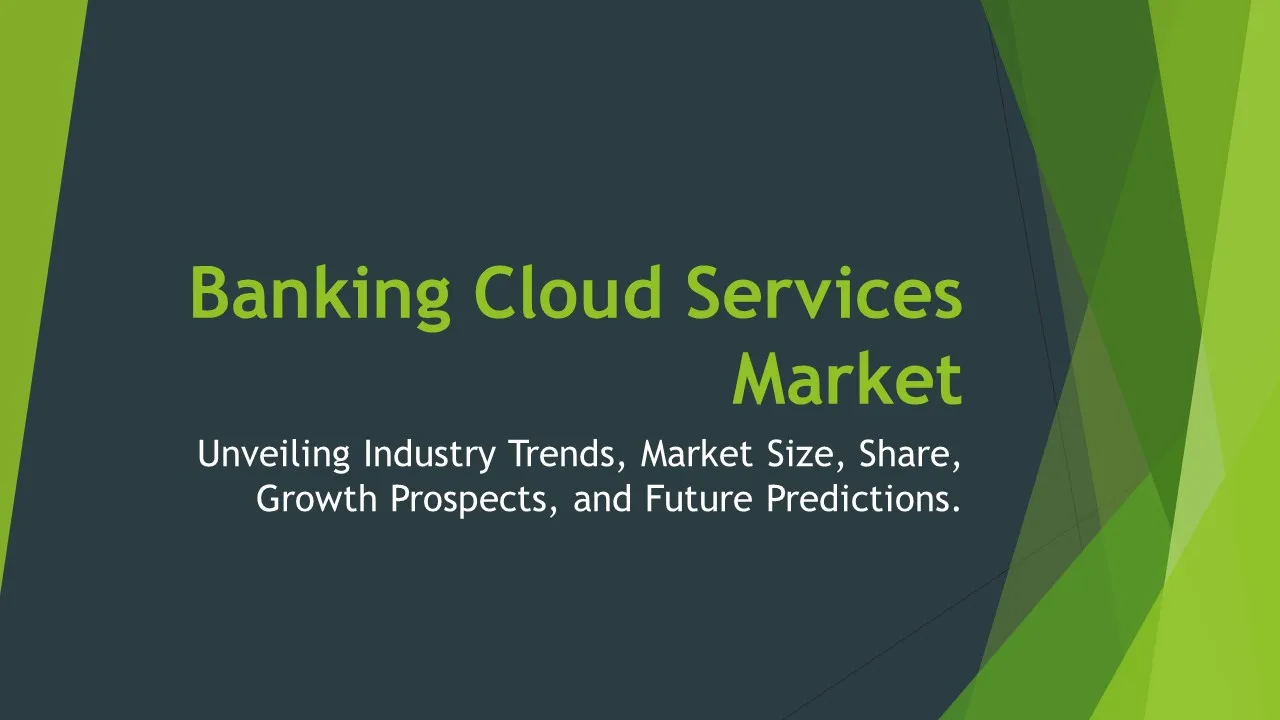Application Shielding Software
Application Shielding Software Market Segments - by Product Type (Code Obfuscation, White-box Cryptography, Runtime Application Self-Protection (RASP), Software Watermarking, and Binary Stirring), Application (Mobile Applications, Web Applications, Desktop Applications, Cloud-based Applications, and IoT Applications), Distribution Channel (Direct Sales, Indirect Sales), Industry Vertical (Banking, Financial Services, and Insurance (BFSI), Healthcare, Retail, IT and Telecom, and Others), and Region (North America, Europe, Asia Pacific, Latin America, Middle East & Africa) - Global Industry Analysis, Growth, Share, Size, Trends, and Forecast 2025-2035
- Report Preview
- Table Of Content
- Segments
- Methodology
Application Shielding Software Market Outlook
The global application shielding software market is projected to reach USD 2.8 billion by 2035, growing at a compound annual growth rate (CAGR) of 17.5% from 2025 to 2035. This significant growth can be attributed to the increasing instances of cyber threats that target applications and the growing need for organizations to protect sensitive information, especially in sectors such as banking and healthcare. Furthermore, the rapid digital transformation across various industries has necessitated robust security solutions, leading to a surge in the adoption of application shielding software. The advancement of technologies such as cloud computing and the Internet of Things (IoT) has also opened new avenues for this market, creating an urgent requirement for effective application protection measures. Thus, the convergence of these factors is likely to fuel the market's expansion in the coming years.
Growth Factor of the Market
One of the primary growth factors driving the application shielding software market is the increasing occurrence of data breaches and cyber-attacks that compromise application security. With the growing digitization and reliance on mobile and web applications, businesses are more vulnerable to threats such as malware, ransomware, and phishing attacks. As a result, organizations are investing heavily in application shielding measures to protect their assets and maintain customer trust. Furthermore, the rising regulatory pressures regarding data protection and privacy, such as GDPR and HIPAA, are pushing companies to adopt stringent security protocols, including application shielding software. Additionally, the proliferation of cloud services and IoT devices creates more entry points for potential attacks, necessitating enhanced protection strategies. The growing awareness about the critical importance of application security among enterprises is also contributing to the market's growth. Lastly, innovations in machine learning and artificial intelligence within application shielding solutions are enhancing their effectiveness, thus driving further adoption.
Key Highlights of the Market
- The application shielding software market is expected to reach USD 2.8 billion by 2035.
- North America is the leading region in terms of market share, attributed to the high concentration of tech companies and cybersecurity awareness.
- The CAGR of the market is forecasted at 17.5% from 2025 to 2035.
- Healthcare and BFSI sectors are the largest adopters of application shielding solutions due to stringent regulatory requirements.
- Technological advancements, such as AI and machine learning, are significantly enhancing the capabilities of application shielding software.
By Product Type
Code Obfuscation:
Code obfuscation is a prominent type of application shielding software that involves modifying the code of an application to make it difficult for unauthorized users to understand or reverse-engineer. This technique is particularly effective in protecting intellectual property and sensitive algorithms, making it essential for software developers in various sectors. By obscuring the code, businesses can safeguard their applications from piracy, tampering, and other unauthorized modifications. Code obfuscation is widely used in mobile and web applications, where the risk of reverse engineering is higher. The demand for this type of protection is expected to grow as organizations recognize the value of their proprietary code and the potential risks associated with its exposure.
White-box Cryptography:
White-box cryptography is another critical product type within the application shielding software market. It involves implementing cryptographic algorithms in such a way that they remain secure even in environments where attackers have full access to the executing code and its secrets. This method is particularly beneficial for applications that require high levels of data security, such as financial software and sensitive healthcare applications. The increasing need for data encryption and secure key management is driving the adoption of white-box cryptography, as it provides an additional layer of security against potential attacks. As organizations continue to prioritize data protection, the demand for white-box cryptography solutions is expected to rise significantly.
Runtime Application Self-Protection (RASP):
Runtime Application Self-Protection (RASP) is a revolutionary approach to application security that provides real-time protection against threats during application execution. Unlike traditional security measures that operate outside the application, RASP embeds security directly into the application, allowing it to respond dynamically to threats. This technology is particularly effective against attacks such as SQL injection, cross-site scripting, and other vulnerabilities. The increasing complexity of cyber threats and the need for proactive security measures are driving the growth of RASP solutions. As organizations become more aware of the limitations of perimeter security, the adoption of RASP is expected to gain momentum, especially among businesses that require continuous application availability and security.
Software Watermarking:
Software watermarking is a protective measure that embeds a unique identifier within an application to deter piracy and unauthorized distribution. This method serves as both a deterrent and a tracking mechanism, allowing software developers to trace unauthorized copies back to their source. The increasing prevalence of software piracy and the need for protecting intellectual property are propelling the demand for software watermarking solutions. Many software companies, particularly in the gaming and multimedia sectors, are adopting this technology to secure their products and maintain revenue streams. As the global digital content market continues to expand, the relevance and importance of software watermarking will likely grow correspondingly.
Binary Stirring:
Binary stirring is an innovative technique used to obfuscate and protect the binary code of software applications, making it challenging for attackers to reverse engineer and understand the underlying logic. This method involves modifying the binary code at various levels, ensuring that the original application remains intact while disguising its structure. The increasing focus on application security, particularly in sectors that manage sensitive data, is driving the demand for binary stirring solutions. As organizations prioritize securing their applications against reverse engineering and unauthorized access, the relevance of binary stirring is expected to rise in the coming years, particularly among software developers and cybersecurity professionals.
By Protection
Application Security:
Application security encompasses a wide range of measures and technologies designed to protect applications from threats throughout the development and deployment lifecycle. This includes practices such as secure coding, vulnerability assessments, and continuous monitoring for potential threats. With the increasing reliance on applications across all sectors, especially financial services and healthcare, there is a growing recognition of the importance of application security. Organizations are investing in comprehensive application protection strategies to mitigate risks and ensure compliance with regulations. As cyber threats continue to evolve, the demand for advanced application security solutions is expected to rise, further driving the growth of application shielding software.
Data Protection:
Data protection is a critical aspect of application shielding software that focuses on safeguarding sensitive information from unauthorized access and breaches. This includes measures such as encryption, access controls, and secure data storage practices. As data breaches become increasingly common, organizations are prioritizing data protection strategies to maintain customer trust and comply with data privacy regulations. The demand for solutions that offer robust data protection capabilities is expected to increase as more businesses recognize the need to protect their digital assets. Furthermore, with the growth of cloud computing and remote work, organizations are looking for effective data protection solutions that can secure data across multiple environments.
By Application
Mobile Applications:
The mobile application segment is one of the fastest-growing areas within the application shielding software market. With the widespread adoption of smartphones and mobile devices, businesses are increasingly relying on mobile applications for customer engagement and service delivery. However, this also exposes them to a myriad of security risks, including data breaches and malware attacks. Application shielding software designed specifically for mobile platforms provides critical protection against these threats, ensuring the integrity and confidentiality of sensitive data. As consumer reliance on mobile applications continues to grow, the demand for application shielding solutions tailored to mobile environments is expected to rise significantly.
Web Applications:
Web applications are another vital component of the application shielding software market, as they are often targeted by cybercriminals due to their accessibility and the sensitive information they handle. Businesses are increasingly adopting web applications for various functions, from e-commerce to customer relationship management. The need for security solutions that protect web applications from common vulnerabilities, such as cross-site scripting and SQL injection attacks, is paramount. Application shielding software provides the necessary defenses against these threats, ensuring that businesses can operate securely in the digital landscape. As the number of web applications continues to rise, the demand for dedicated shielding solutions will also grow.
Desktop Applications:
Desktop applications, although less prevalent than mobile and web applications, still represent a significant segment of the application shielding software market. Many organizations rely on desktop applications for critical business functions, making them attractive targets for attackers. The importance of protecting these applications from unauthorized access and exploitation cannot be overstated. Application shielding solutions designed for desktop environments focus on securing sensitive data, preventing reverse engineering, and ensuring compliance with regulatory standards. As organizations continue to use desktop applications alongside cloud solutions, the demand for effective application shielding for this segment is expected to remain strong.
Cloud-based Applications:
The rise of cloud computing has transformed the way organizations deploy and manage applications, creating a demand for application shielding solutions that specifically address the unique security challenges of cloud environments. Cloud-based applications often store sensitive data and are accessible from various devices, making them susceptible to a range of cyber threats. Application shielding software designed for cloud environments provides essential protection measures, including data encryption, access controls, and real-time monitoring. As more organizations migrate to the cloud, the demand for specialized application shielding solutions that can secure cloud-based applications is expected to increase significantly.
IoT Applications:
IoT applications are becoming increasingly prevalent in various industries, from healthcare to manufacturing, creating a unique set of security challenges due to the vast number of connected devices. These applications must be secured against potential threats, as vulnerabilities in one device can compromise the entire network. Application shielding software tailored for IoT applications focuses on protecting sensitive data, ensuring secure communication between devices, and preventing unauthorized access. As the number of IoT devices continues to grow exponentially, the demand for effective application shielding solutions specifically designed for IoT environments is poised for significant expansion.
By Distribution Channel
Direct Sales:
Direct sales represent a significant distribution channel for application shielding software, as many vendors prefer to engage directly with clients to provide tailored solutions based on their specific needs. This approach allows companies to establish strong relationships with their customers and ensure that the software meets their security requirements. Through direct sales, vendors can offer personalized support, training, and ongoing service, which enhances customer satisfaction and retention. As enterprises increasingly seek customized application shielding solutions, the demand for direct sales channels will likely continue to grow.
Indirect Sales:
Indirect sales channels, such as partnerships with resellers and distributors, also play a crucial role in the application shielding software market. These channels enable vendors to reach a broader audience and tap into various industry verticals. By leveraging the established networks and expertise of partners, application shielding software vendors can effectively market their solutions to a diverse range of customers. The growth of indirect sales channels is expected to be driven by the increasing need for application security across multiple sectors, as resellers offer valuable insights and support to organizations seeking effective shielding solutions.
By Industry Vertical
Banking, Financial Services, and Insurance (BFSI):
The BFSI sector is one of the largest adopters of application shielding software due to the vast amounts of sensitive data it handles and the stringent regulatory requirements it faces. Financial institutions are prime targets for cybercriminals, making the protection of applications critical to safeguarding customer information and maintaining trust. Application shielding software provides essential protection against common threats, ensuring the integrity of financial transactions and sensitive data. As the BFSI sector continues to digitalize its services, the demand for robust application shielding solutions will remain strong.
Healthcare:
The healthcare industry is experiencing rapid digital transformation, with a growing reliance on electronic health records (EHRs) and telemedicine applications. This shift has heightened the need for application shielding software to protect sensitive patient data from cyber threats. Regulatory frameworks, such as HIPAA, mandate strict security measures, further driving the adoption of application shielding solutions in healthcare. As organizations prioritize patient data protection and comply with regulatory standards, the demand for application shielding software specifically designed for the healthcare sector is expected to increase significantly.
Retail:
The retail sector is increasingly adopting application shielding software to protect sensitive customer data and secure online transactions. With the growth of e-commerce and mobile shopping, retailers face heightened risks of data breaches and cyber attacks. Application shielding solutions help safeguard payment information and customer details, ensuring a secure shopping experience. As consumer trust becomes paramount in retaining business, the demand for application shielding software in retail is expected to grow, driven by the need for robust security measures.
IT and Telecom:
The IT and telecom sectors are heavily reliant on applications for service delivery and customer engagement, making them attractive targets for cybercriminals. As organizations in these sectors seek to enhance their security postures, application shielding software becomes critical in protecting applications from vulnerabilities and attacks. The growing emphasis on secure software development practices is driving the adoption of application shielding solutions in IT and telecom. As the digital landscape evolves, the demand for effective application shielding software in these sectors is anticipated to rise.
Others:
Besides the primary sectors mentioned, various other industries are increasingly recognizing the importance of application shielding software. Sectors such as manufacturing, education, and government are also adopting security measures to protect their applications from threats. As more industries transition to digital solutions and face the risks associated with cyber threats, the demand for application shielding software is expected to grow across diverse verticals. The versatility of application shielding solutions allows organizations in different sectors to safeguard their applications and data effectively, driving broader market expansion.
Opportunities
The application shielding software market presents numerous opportunities for growth, particularly as organizations increasingly prioritize cybersecurity in the face of evolving threats. One significant opportunity lies in the development of advanced technologies, such as artificial intelligence and machine learning, which can enhance the effectiveness of application shielding solutions. These technologies can enable real-time threat detection, predictive analytics, and automated response mechanisms, providing organizations with more robust protection against potential attacks. Additionally, the growing trend of remote work and digitalization across various industries creates an expanding market for application shielding software as businesses seek to secure their applications in increasingly complex environments.
Furthermore, the rise of regulatory requirements pertaining to data protection and privacy presents a ripe opportunity for the application shielding software market. Organizations are compelled to comply with various regulations, such as GDPR, HIPAA, and PCI DSS, which necessitate stringent security measures for applications handling sensitive data. As organizations strive to meet these compliance standards, the demand for application shielding solutions that ensure data protection will naturally increase. Overall, the interplay between advancing technology, regulatory pressures, and the increasing complexity of cyber threats presents a fertile ground for the growth of the application shielding software market.
Threats
Despite the promising growth prospects for the application shielding software market, several threats could potentially hinder its expansion. One significant threat is the rapid evolution of cyber threats, as malicious actors continuously adapt their tactics to exploit vulnerabilities in applications. The emergence of sophisticated attacks, such as advanced persistent threats (APTs) and zero-day exploits, poses challenges for application shielding solutions that must remain agile and responsive to such evolving threats. Additionally, the prevalence of open-source software and third-party libraries can introduce vulnerabilities that increase the risks associated with application security. Organizations must stay vigilant and ensure that their application shielding strategies can effectively address these emerging threats to maintain a secure digital environment.
Another concern is the potential for market saturation as more vendors enter the application shielding software space, leading to increased competition and pricing pressures. As the market becomes crowded, differentiating products and demonstrating their effectiveness will become increasingly challenging for vendors. Additionally, organizations may experience fatigue from the sheer volume of security solutions available, leading to indecision and underinvestment in application shielding measures. This could ultimately slow the adoption of application shielding software, limiting market growth. Companies must focus on innovation and delivering value to customers to overcome these challenges and remain competitive in this dynamic landscape.
Competitor Outlook
- Veracode
- Checkmarx
- Micro Focus
- Synopsys
- Fortify
- WhiteCryption
- Pradeo
- Zimperium
- Paladion Networks
- Arxan Technologies
- Imperva
- SentinelOne
- Trend Micro
- F5 Networks
- ProtectWise
The competitive landscape of the application shielding software market is characterized by a mix of established cybersecurity firms and emerging startups, all vying for market share in this rapidly evolving sector. Major players in the market, such as Veracode and Checkmarx, offer comprehensive application security solutions that encompass various types of shielding methodologies, making them well-positioned to capture a significant portion of the market. These companies continually invest in research and development to enhance their offerings and maintain a competitive edge. Additionally, partnerships and collaborations with industry leaders allow them to expand their reach and provide integrated solutions that address the diverse needs of organizations seeking application protection.
Emerging players, such as Zimperium and Pradeo, are gaining traction by focusing on innovative application shielding techniques and targeting specific market segments. These companies often leverage advanced technologies, such as machine learning and artificial intelligence, to differentiate their products and address the evolving threat landscape. The influx of new entrants not only intensifies competition but also drives innovation within the market, leading to the continuous improvement of application shielding software. As cybersecurity threats become increasingly sophisticated, the ability to adapt and respond to emerging challenges will be critical for all players in this space.
Leading companies like Fortify, Micro Focus, and Synopsys are also significant contributors to the application shielding software market. They offer extensive portfolios that include a wide range of security solutions tailored to various industries. These companies emphasize the importance of integrating application security early in the software development lifecycle, promoting the adoption of secure coding practices and proactive threat detection. Furthermore, their global presence and established reputations enhance their credibility, making them trusted partners for organizations looking to bolster their application security efforts.
1 Appendix
- 1.1 List of Tables
- 1.2 List of Figures
2 Introduction
- 2.1 Market Definition
- 2.2 Scope of the Report
- 2.3 Study Assumptions
- 2.4 Base Currency & Forecast Periods
3 Market Dynamics
- 3.1 Market Growth Factors
- 3.2 Economic & Global Events
- 3.3 Innovation Trends
- 3.4 Supply Chain Analysis
4 Consumer Behavior
- 4.1 Market Trends
- 4.2 Pricing Analysis
- 4.3 Buyer Insights
5 Key Player Profiles
- 5.1 Pradeo
- 5.1.1 Business Overview
- 5.1.2 Products & Services
- 5.1.3 Financials
- 5.1.4 Recent Developments
- 5.1.5 SWOT Analysis
- 5.2 Fortify
- 5.2.1 Business Overview
- 5.2.2 Products & Services
- 5.2.3 Financials
- 5.2.4 Recent Developments
- 5.2.5 SWOT Analysis
- 5.3 Imperva
- 5.3.1 Business Overview
- 5.3.2 Products & Services
- 5.3.3 Financials
- 5.3.4 Recent Developments
- 5.3.5 SWOT Analysis
- 5.4 Synopsys
- 5.4.1 Business Overview
- 5.4.2 Products & Services
- 5.4.3 Financials
- 5.4.4 Recent Developments
- 5.4.5 SWOT Analysis
- 5.5 Veracode
- 5.5.1 Business Overview
- 5.5.2 Products & Services
- 5.5.3 Financials
- 5.5.4 Recent Developments
- 5.5.5 SWOT Analysis
- 5.6 Checkmarx
- 5.6.1 Business Overview
- 5.6.2 Products & Services
- 5.6.3 Financials
- 5.6.4 Recent Developments
- 5.6.5 SWOT Analysis
- 5.7 Zimperium
- 5.7.1 Business Overview
- 5.7.2 Products & Services
- 5.7.3 Financials
- 5.7.4 Recent Developments
- 5.7.5 SWOT Analysis
- 5.8 F5 Networks
- 5.8.1 Business Overview
- 5.8.2 Products & Services
- 5.8.3 Financials
- 5.8.4 Recent Developments
- 5.8.5 SWOT Analysis
- 5.9 Micro Focus
- 5.9.1 Business Overview
- 5.9.2 Products & Services
- 5.9.3 Financials
- 5.9.4 Recent Developments
- 5.9.5 SWOT Analysis
- 5.10 ProtectWise
- 5.10.1 Business Overview
- 5.10.2 Products & Services
- 5.10.3 Financials
- 5.10.4 Recent Developments
- 5.10.5 SWOT Analysis
- 5.11 SentinelOne
- 5.11.1 Business Overview
- 5.11.2 Products & Services
- 5.11.3 Financials
- 5.11.4 Recent Developments
- 5.11.5 SWOT Analysis
- 5.12 Trend Micro
- 5.12.1 Business Overview
- 5.12.2 Products & Services
- 5.12.3 Financials
- 5.12.4 Recent Developments
- 5.12.5 SWOT Analysis
- 5.13 WhiteCryption
- 5.13.1 Business Overview
- 5.13.2 Products & Services
- 5.13.3 Financials
- 5.13.4 Recent Developments
- 5.13.5 SWOT Analysis
- 5.14 Paladion Networks
- 5.14.1 Business Overview
- 5.14.2 Products & Services
- 5.14.3 Financials
- 5.14.4 Recent Developments
- 5.14.5 SWOT Analysis
- 5.15 Arxan Technologies
- 5.15.1 Business Overview
- 5.15.2 Products & Services
- 5.15.3 Financials
- 5.15.4 Recent Developments
- 5.15.5 SWOT Analysis
- 5.1 Pradeo
6 Market Segmentation
- 6.1 Application Shielding Software Market, By Application
- 6.1.1 Mobile Applications
- 6.1.2 Web Applications
- 6.1.3 Desktop Applications
- 6.1.4 Cloud-based Applications
- 6.1.5 IoT Applications
- 6.2 Application Shielding Software Market, By Product Type
- 6.2.1 Code Obfuscation
- 6.2.2 White-box Cryptography
- 6.2.3 Runtime Application Self-Protection (RASP)
- 6.2.4 Software Watermarking
- 6.2.5 Binary Stirring
- 6.3 Application Shielding Software Market, By Industry Vertical
- 6.3.1 Banking
- 6.3.2 Financial Services
- 6.3.3 Insurance (BFSI)
- 6.3.4 Healthcare
- 6.3.5 Retail
- 6.3.6 IT and Telecom
- 6.3.7 Others
- 6.4 Application Shielding Software Market, By Distribution Channel
- 6.4.1 Direct Sales
- 6.4.2 Indirect Sales
- 6.1 Application Shielding Software Market, By Application
7 Competitive Analysis
- 7.1 Key Player Comparison
- 7.2 Market Share Analysis
- 7.3 Investment Trends
- 7.4 SWOT Analysis
8 Research Methodology
- 8.1 Analysis Design
- 8.2 Research Phases
- 8.3 Study Timeline
9 Future Market Outlook
- 9.1 Growth Forecast
- 9.2 Market Evolution
10 Geographical Overview
- 10.1 Europe - Market Analysis
- 10.1.1 By Country
- 10.1.1.1 UK
- 10.1.1.2 France
- 10.1.1.3 Germany
- 10.1.1.4 Spain
- 10.1.1.5 Italy
- 10.1.1 By Country
- 10.2 Asia Pacific - Market Analysis
- 10.2.1 By Country
- 10.2.1.1 India
- 10.2.1.2 China
- 10.2.1.3 Japan
- 10.2.1.4 South Korea
- 10.2.1 By Country
- 10.3 Latin America - Market Analysis
- 10.3.1 By Country
- 10.3.1.1 Brazil
- 10.3.1.2 Argentina
- 10.3.1.3 Mexico
- 10.3.1 By Country
- 10.4 North America - Market Analysis
- 10.4.1 By Country
- 10.4.1.1 USA
- 10.4.1.2 Canada
- 10.4.1 By Country
- 10.5 Middle East & Africa - Market Analysis
- 10.5.1 By Country
- 10.5.1.1 Middle East
- 10.5.1.2 Africa
- 10.5.1 By Country
- 10.6 Application Shielding Software Market by Region
- 10.1 Europe - Market Analysis
11 Global Economic Factors
- 11.1 Inflation Impact
- 11.2 Trade Policies
12 Technology & Innovation
- 12.1 Emerging Technologies
- 12.2 AI & Digital Trends
- 12.3 Patent Research
13 Investment & Market Growth
- 13.1 Funding Trends
- 13.2 Future Market Projections
14 Market Overview & Key Insights
- 14.1 Executive Summary
- 14.2 Key Trends
- 14.3 Market Challenges
- 14.4 Regulatory Landscape
Segments Analyzed in the Report
The global Application Shielding Software market is categorized based on
By Product Type
- Code Obfuscation
- White-box Cryptography
- Runtime Application Self-Protection (RASP)
- Software Watermarking
- Binary Stirring
By Application
- Mobile Applications
- Web Applications
- Desktop Applications
- Cloud-based Applications
- IoT Applications
By Distribution Channel
- Direct Sales
- Indirect Sales
By Industry Vertical
- Banking
- Financial Services
- Insurance (BFSI)
- Healthcare
- Retail
- IT and Telecom
- Others
By Region
- North America
- Europe
- Asia Pacific
- Latin America
- Middle East & Africa
Key Players
- Veracode
- Checkmarx
- Micro Focus
- Synopsys
- Fortify
- WhiteCryption
- Pradeo
- Zimperium
- Paladion Networks
- Arxan Technologies
- Imperva
- SentinelOne
- Trend Micro
- F5 Networks
- ProtectWise
- Publish Date : Jan 21 ,2025
- Report ID : IT-69295
- No. Of Pages : 100
- Format : |
- Ratings : 4.5 (110 Reviews)
Related reports









